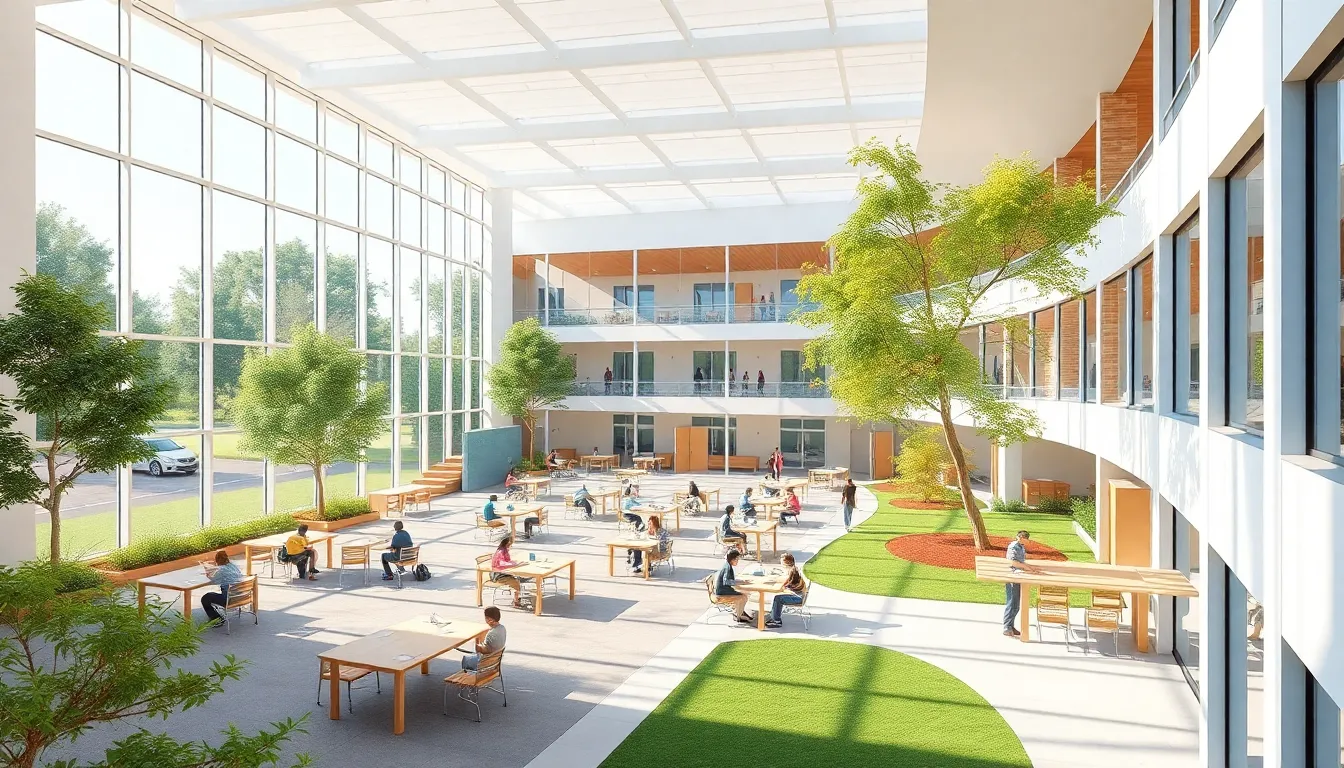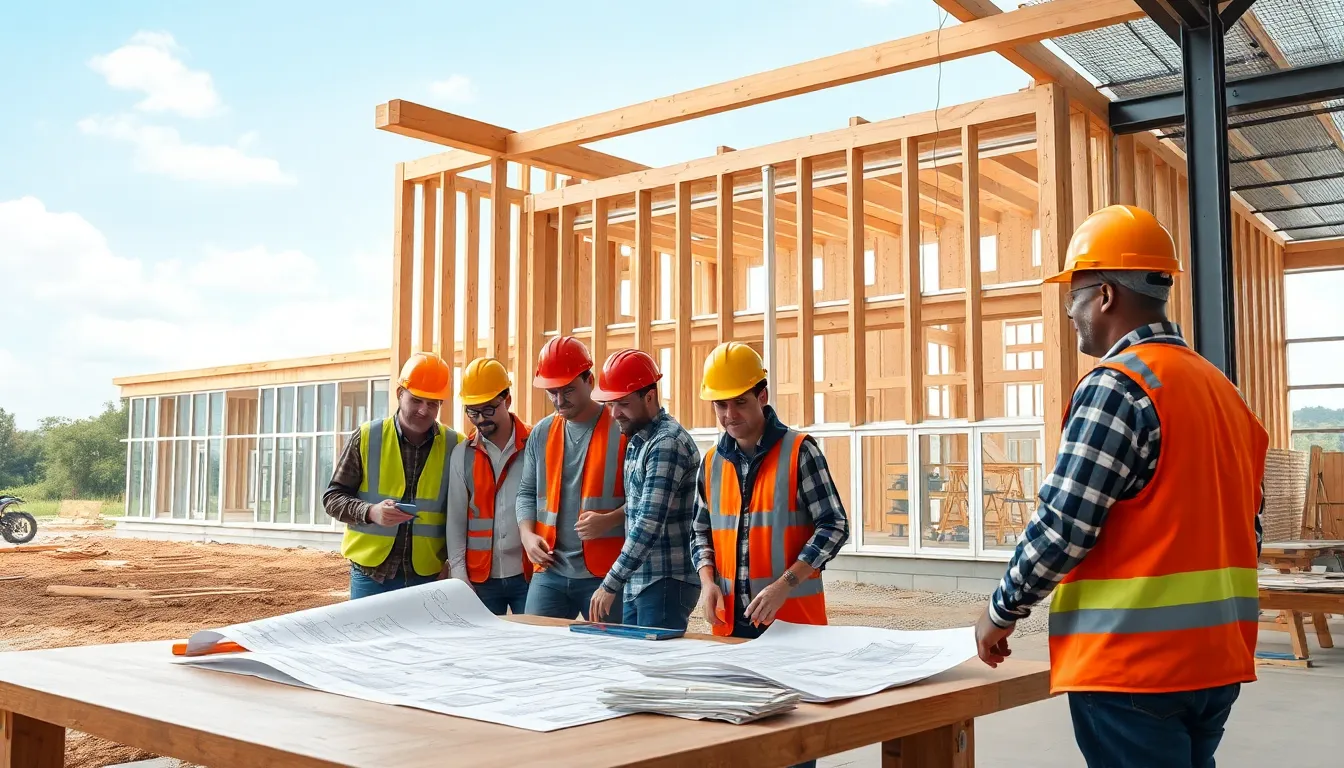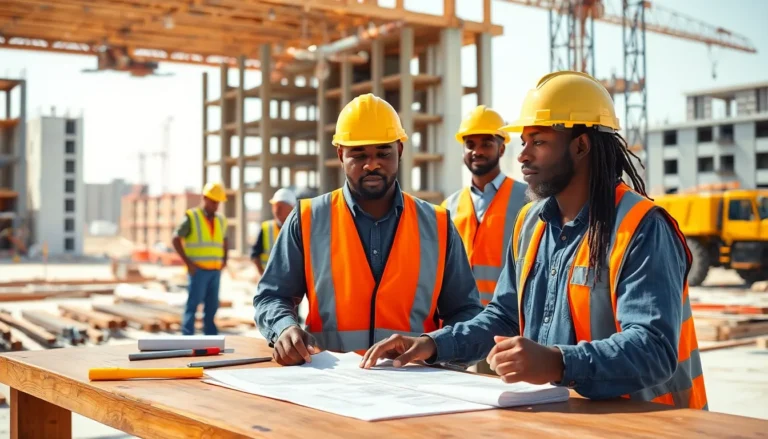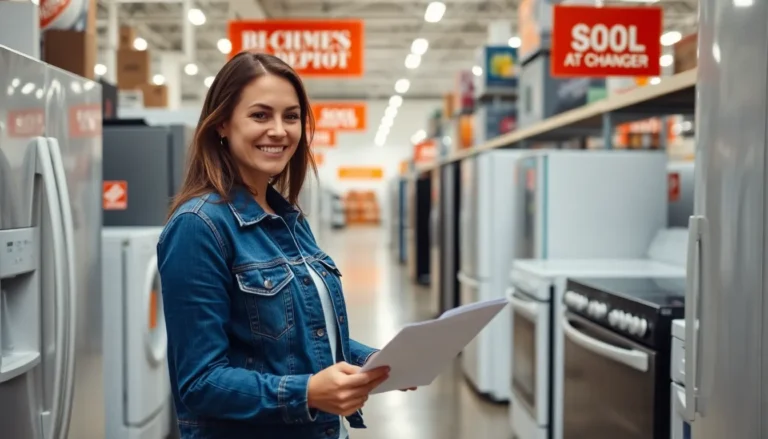Table of Contents
ToggleIn a world where classrooms are often more outdated than a flip phone, the need for innovative educational building construction has never been more pressing. Imagine walking into a school that sparks creativity, fosters collaboration, and makes learning feel less like a chore and more like an adventure. It’s not just about bricks and mortar; it’s about building environments that inspire the next generation of thinkers, dreamers, and doers.
With the right approach, educational buildings can become vibrant hubs of knowledge, equipped with the latest technology and designed to accommodate diverse learning styles. From eco-friendly materials to flexible spaces that can adapt to changing needs, the future of educational construction is bright—and a little bit cheeky. Why not create a space where students can thrive, all while keeping the construction process as smooth as a well-oiled pencil sharpener? Let’s dive into the exciting world of educational building construction and explore how it can transform learning experiences for everyone involved.
Overview of Educational Building Construction
Educational building construction encompasses the design and creation of structures aimed at facilitating learning. Schools, colleges, and universities require tailored facilities that support diverse educational needs. Utilizing modern architectural practices, constructors emphasize flexibility, allowing spaces to adapt to various teaching methods and learning styles.
Incorporating technology is crucial in contemporary educational buildings. Smart classrooms feature integrated tech that enhances student engagement and collaboration. Access to information technology resources can significantly improve educational outcomes. Various design elements, such as movable walls and multifunctional spaces, allow for dynamic learning environments.
Sustainability plays a vital role in the construction of educational buildings. Using eco-friendly materials reduces the environmental impact while fostering healthier learning environments. Green buildings often reduce operational costs through energy-efficient systems. The use of natural light and ventilation strategies promotes student well-being, which is essential for effective learning.
Cost-effective construction practices are necessary to meet budgets while ensuring quality. Streamlined project management and value engineering help optimize resources. Collaboration between architects, educators, and contractors can lead to innovative solutions tailored to specific educational goals.
Safety must not be overlooked in educational building construction. Adhering to building codes and regulations ensures that facilities provide safe environments for students and staff. Incorporating security measures, such as controlled access and surveillance systems, safeguards against potential threats.
By focusing on these essential aspects, the construction of educational buildings can transform the learning experience. Prioritizing innovative design, sustainability, and safety creates vibrant, effective learning spaces that foster knowledge and creativity among students.
Key Considerations in Design

Designing educational buildings involves several key considerations that enhance functionality and learning. Focusing on space utilization is essential to meet diverse educational needs.
Space Utilization
Effective space utilization maximizes learning opportunities within the educational environment. Classrooms should accommodate varied teaching methods and learning styles. Flexible layouts promote collaboration, allowing for group work and individual study. Multi-purpose areas encourage diverse activities, from lectures to hands-on projects. Access to natural light and open spaces enhances student engagement. Additionally, outdoor areas can support physical activities and environmental education, creating a well-rounded learning experience.
Sustainability Factors
Sustainability factors play a crucial role in modern educational building design. Eco-friendly materials reduce environmental impact and ensure healthier indoor air quality. Energy-efficient systems lower operational costs while promoting responsible resource use. Implementing renewable energy sources, such as solar panels, offers long-term savings and enhances energy independence. Green building certifications, such as LEED, reflect a commitment to sustainability and attract environmentally aware students and staff. Incorporating sustainable practices not only meets current educational demands but also prepares future generations for responsible stewardship of resources.
Types of Educational Buildings
Educational buildings serve various purposes across different learning institutions. Each type provides unique spaces that tailor to specific educational needs.
Primary and Secondary Schools
Primary and secondary schools focus on creating environments conducive to early learning and adolescent development. Classrooms emphasize flexibility, with designs accommodating diverse teaching methods. Outdoor spaces and multipurpose areas enhance physical activity and social interaction. Library facilities often integrate technology, ensuring students access to resources that support their studies. Safety features, including secure entry points and surveillance systems, protect students and staff while fostering a secure learning environment.
Higher Education Facilities
Higher education facilities cater to a broader range of academic pursuits, providing specialized spaces for various disciplines. Lecture halls often feature advanced audio-visual systems that facilitate dynamic teaching. Laboratories and research centers focus on hands-on learning, promoting innovation and discovery. Collaborative spaces encourage group work and idea exchange, reflecting the need for cooperation in modern education. Green building practices, such as energy-efficient systems and sustainable materials, enhance campus environments while lowering long-term operational costs.
Construction Techniques and Materials
Educational building construction combines various techniques and materials to create optimal learning environments. Understanding these methods fosters innovative design and execution, ultimately enhancing the educational experience.
Traditional Methods
Traditional methods remain foundational in educational building construction. Masonry and wood framing serve as popular choices, offering durability and structural integrity. Brick and concrete provide long-lasting materials for school exteriors. Timber, utilized for framing, supports eco-friendly practices and natural aesthetics. Roofing techniques involve asphalt shingles or metal sheets, contributing to energy efficiency. Reinforced concrete and steel beams enhance overall stability in larger structures. Each approach emphasizes safety, aesthetic appeal, and functional design within educational facilities.
Modern Innovations
Modern innovations revolutionize educational building construction. Prefabrication allows for rapid assembly, minimizing on-site disruption and accelerating project timelines. Sustainable materials like recycled steel and bamboo promote environmental stewardship. Incorporating smart technology, such as automated climate controls and energy-efficient systems, leads to lower operational costs. Modular designs offer flexibility in classroom configurations and adaptability for future needs. Advanced insulation techniques significantly improve energy efficiency, creating a comfortable learning atmosphere. These innovations ultimately reflect a commitment to enhancing student engagement and promoting collaborative learning environments.
Regulatory and Safety Standards
Regulatory and safety standards govern educational building construction, ensuring the safety and welfare of students and staff. Compliance with local building codes is essential, as these codes specify construction practices, structural integrity, and materials used. Each state has its own specific regulations, which may include fire safety measures, accessibility guidelines according to the Americans with Disabilities Act (ADA), and zoning requirements.
Safety features must incorporate modern technology for enhanced security. Surveillance systems and secure entry points provide necessary protection in educational settings. Furthermore, emergency preparedness plans and regular safety drills contribute to a responsive environment during crises.
Health and safety considerations play a crucial role throughout the construction process. Proper ventilation systems reduce indoor air pollutants, promoting a healthier learning atmosphere. Additionally, the selection of low-VOC (volatile organic compounds) materials minimizes exposure to harmful chemicals, ensuring a safe space for students.
Green building certifications, such as LEED, emphasize sustainability in educational facilities. Receiving these certifications often requires adherence to specific performance criteria, addressing energy efficiency, water conservation, and the use of eco-friendly materials. These standards align with the commitment to create not only safe but also environmentally responsible learning environments.
Regular inspections during construction projects examine compliance with safety standards. Inspectors verify that all materials meet specified guidelines while ensuring that safety measures are properly implemented. Continuous monitoring throughout the construction phase helps maintain adherence to regulatory requirements, resulting in a secure structure.
Ultimately, prioritizing regulatory compliance and safety standards leads to educational buildings that support both student learning and well-being. By integrating safety measures with innovative designs, schools can foster environments that are not only inspiring but also secure.
The future of educational building construction lies in embracing innovation and sustainability. By prioritizing designs that foster collaboration and creativity, schools can transform into dynamic learning environments. Incorporating modern technology and eco-friendly materials not only enhances student engagement but also promotes responsible resource stewardship.
Safety and compliance remain paramount in creating spaces that protect students and staff. As educational institutions evolve, the commitment to flexible layouts and multi-purpose areas will ensure that they meet diverse learning needs. Ultimately, the focus on innovative construction practices will pave the way for a new era in education, where every building serves as a catalyst for growth and inspiration.







